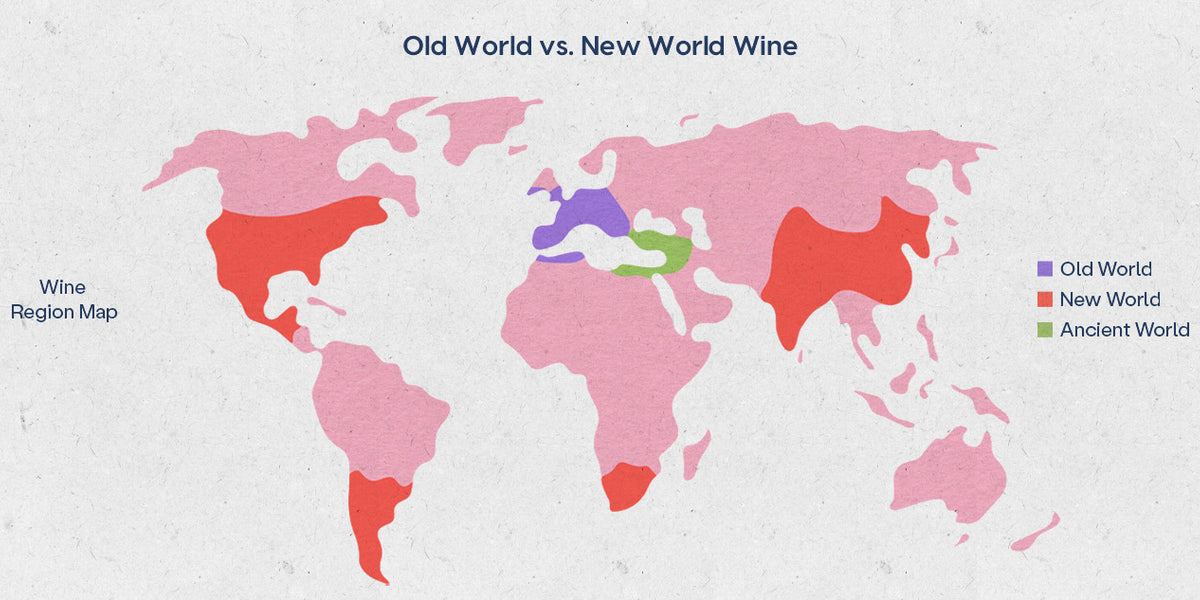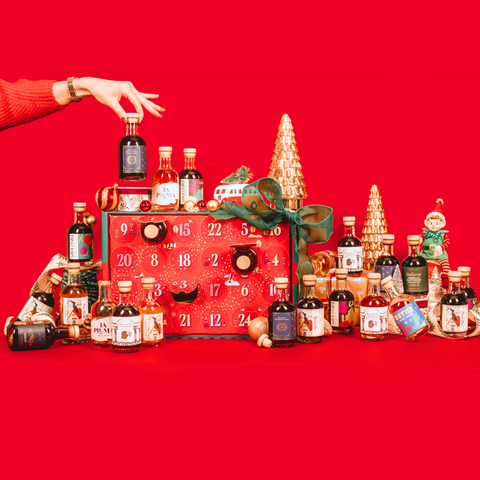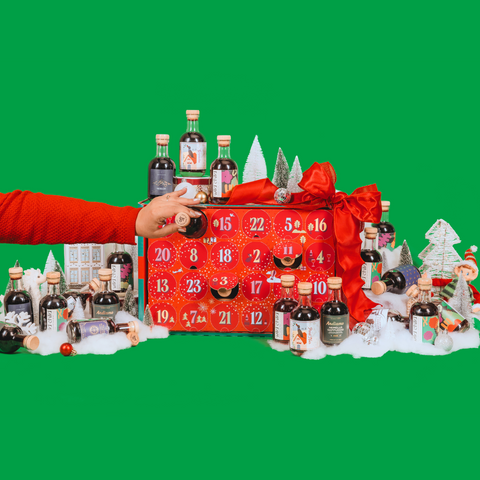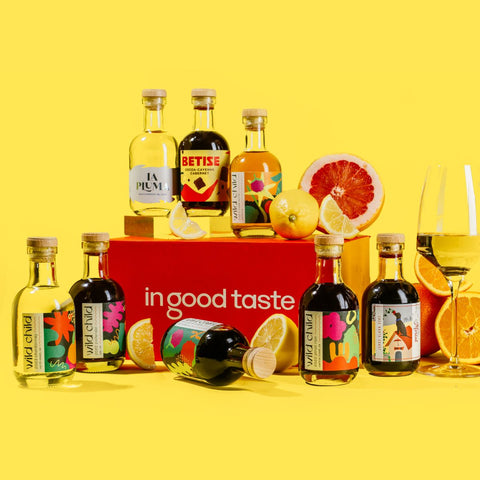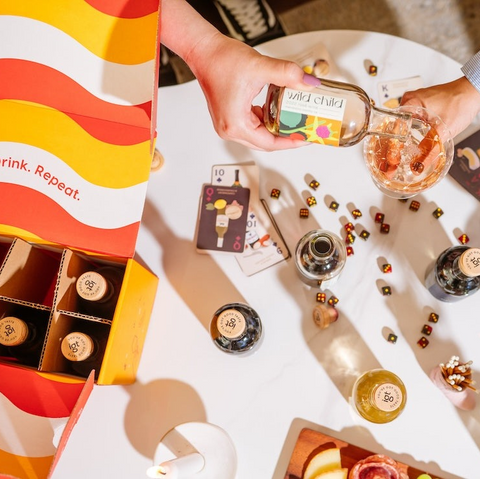Which World Reigns Supreme?
If you’re learning more about wine and winemaking in general, you’ve probably encountered the terms “Old World” and “New World.” If you haven’t — well, you have now. So let’s keep going! Some wine traditionalists assert that Old World wines are the best because they pay homage to old winemaking techniques, while other wine experts may claim to enjoy New World wines more because they bend the rules and break with traditions.
When it comes to selecting the best wine for your glass, you’re probably asking a few questions about the Old World/New World options. What is the difference between Old World and New World wines? Is one really better than the other? Let’s find out once and for all, shall we? In this post, we’ll show you more about where these worlds of wine are found on the map, how the wine from each world is different, the winemaking philosophies behind each, and whether one world is superior to the other.
Where Is the Old World and New World?
Perhaps the most obvious difference between Old World and New World wines is where they are produced. The Old World designation refers to countries in Europe where modern winemaking techniques originated. These countries include France, Italy, Portugal, Spain, Germany, Hungary, Croatia, and England — all of which have had a major influence on the rest of the winemaking countries in the world.
On the other hand, New World refers to all other countries outside of Europe that make wine. For the most part, these countries were colonized by the Old World winemaking countries, which may explain the winemaking lineage. Some of the major players on the New World wine stage include the United States, Canada, Argentina, South Africa, Australia, New Zealand, and China.

Although the term “Old World” suggests that these countries were the first to produce wine, this isn’t always the case. Wine can be traced back to the Ancient World in far Eastern Europe, where the first wine grapes were grown in the Caucasus Mountains. Many ancient winemakers also hailed from regions that make up modern-day countries, such as Turkey, Armenia, Lebanon, Georgia, Israel, Iran, Egypt, Syria, Iraq, Azerbaijan, Jordan, Cyprus, and Greece. The winemaking techniques originally used in this region were a far cry from the modern production methods that we know today, but without them, we may not know wine at all. So cheers to the world’s original winemakers!
Viticulture and Winemaking
Generally, Old World winemakers place tremendous emphasis on terroir – a French word used to describe the environmental factors that affect crops. These vintners believe that where a grape is grown has a powerful influence on the wine it produces. Conversely, New World winemakers emphasize the science and techniques used to make the wine. Interestingly, these differences can be seen on the labels of Old and New World wines.
New World wines are often labeled by varietal (Chardonnay, Pinot Noir, Merlot, etc.), while Old World wines are commonly labeled by the region or place where the wine was produced. The Old World way of thinking believes that place, or terroir, plays a larger role in the flavor of the wine than the varietal itself.
Because vineyards in the Old World are so … well, old, many of them were planted before machinery was used to harvest grapes. This resulted in the vines being planted closer together than in New World vineyards. The New World vineyards were planted with modern harvesting technology in mind, so leaving more room between vines was essential.

In addition to environmental considerations, Old World wines rely heavily on tradition in their winemaking. This tradition is so deeply entrenched in Old World countries that it can be seen in government regulations that place stringent rules on wines. Some of these regulations include French Appellation d'origine contrôlée (AOC), Italian Denominazione di origine controllata (DOC), Spanish Denominación de Origen (DO), and Portuguese Denominação de Origem Controlada (DOC) laws.
New World wines are not beholden to strict, government-regulated rules for their techniques. As a result, there is more experimentation in the New World, and these winemakers tend to take advantage of modern advances in wine production.
Do Old World and New World Wines Taste Different?
There are a few flavor characteristics that are typically noticed between Old World and New World wines. Old World wines were traditionally made in smaller batches to accompany individual meals. Therefore, these wines usually feature a lighter body, lower alcohol content, higher acidity, and mineral-forward flavors that are less fruity. This more subtle flavor profile is often called “elegant,” while others may refer to it as “tight.” Whatever your word preference, these wines usually offer a delightful acidity that goes well with a wide variety of food pairings.
New World wines have bolder flavor profiles that stand alone, providing a well-balanced sipping experience without the need for food. They are made for consumer palates, and the immediate flavor can be a little overwhelming for wine lovers used to the flavor profile of Old World wines. That’s not to say that New World wines are not food-friendly, but it’s important to remember that bold flavors such as a California Cabernet Sauvignon may overpower a dish with more delicate flavors, such as fish or chicken.

Some of this difference in taste also comes down to the regional conditions of where the grapes are grown. Old World countries have colder climates than the New World, so the grapes often do not ripen as completely or as quickly, resulting in wines with less sugar, lighter body, and lower alcohol content. New World grapes enjoy warmer climates, so they ripen faster, producing bolder wines with higher alcohol content, fuller body, and a slightly sweeter flavor.
Old World vs. New World: A Head-to-Head Comparison
While Old and New World wines both have unique qualities and neither is necessarily better than the other, it might be helpful to consider a single varietal for a clear comparison. Let’s look at Malbec.
Malbec is a wine that originated in France and is primarily used for blending in the Bordeaux region. French Malbecs (Old World) have a tart, savory flavor with a lighter body, making them ideal for wine blends. However, Malbec produced in Argentina (New World) offers a much different flavor profile. Argentina Malbecs are spicy, savory, full-bodied, and have higher alcohol content. They usually feature rich, fruity flavors with notes of coffee, leather, and black pepper — a far cry from the French version. If you want to taste the differences between Old World and New World, Malbecs are a perfect place to start!


